We wanted to go ashore on as many of the Galapagos Islands as we could during a 7-night cruise. After some (much) research on the internet, we chose to book directly with Ecoventura, which operates 3 identical 20 passenger yachts. They depart every Sunday afternoon from San Cristobal and return there on the following Sunday. Ecoventura arranged air flights for its guests on Aerogal to San Christobal, from either Quito or Guayaquil. They also made our hotel arrangements at the Mercure Alameda. All of these arrangements were handled efficiently so we had no concerns getting to and from all of our interim destinations. They also arranged for a bird guide and driver to pick us up and return us to the Hotel Alameda, with a full day of birding in the Quito vicinity prior to our cruise. See preceding Blog. The yacht itself was a superior first class vessel, clean and comfortable, with excellent food and services. I believe Ecoventura tries to group its guests so that there are common interests represented on the various yachts. The median age of our 18 co-passengers was 65, with only 2 “30 somethings”, both daughters of other passengers. None of the Eric passengers went Scuba Diving, but about half of us did enjoy several snorkeling adventures during the course of the trip. Those of us who chose not to snorkel, had ample other opportunities for interesting activities, primarily walks, during the snorkeling stops.
I am a “serious” birder and I did my homework before the trip. It was well that I did, as I shall later explain. I highly recommend “Birds , Mammals, and Reptiles of the Galapagos Islands-An Identification Guide” by Andy Swash and Rob Still. It is very complete and among its various features it has a chart which shows which species may be found on which Islands. This proved especially valuable because the 2 naturalists on the yacht, though more or less competent, did not go out of their ways to help locate and identify the smaller birds, such as the 13 species of Finches. This, of course, is partly due to the fact that most of the guests are not serious birders, and probably would not have cared about such details, or at least would not want to spend a lot of time on them.
We were met at the San Christobal Airport on Sunday, October 30. We were bussed directly to our yacht, the Eric. After the orientation, we selected wet suits, snorkel gear and flippers, even though we doubted that we would use them. They were destined to hang, unused, in our cabin for the entire trip. After lunch we had a wet landing on a San Christobal beach. A “wet landing” means you get wet up to your knees or so before you reach dry land when you get off the “panga” (one of two small rubber boats that take passengers from the yacht to shore). Some of the folks went snorkeling, some sat on the beach, and we, predictably, went birding on the edge of the short vegetation around the perimeter of the beach.
San Christobal. The most amazing aspect of birding in the Galapagos is that the birds often come right up to the birder, instead of flying away. On the beach at San Christobal we first experienced this with Chatham Mockingbirds,
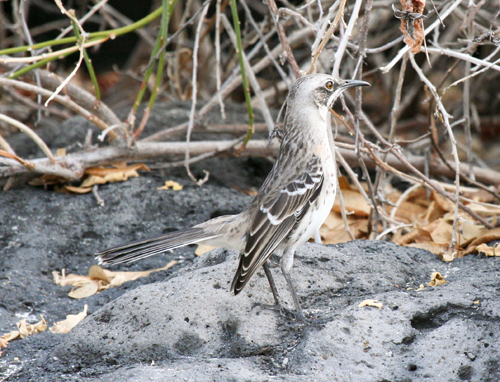
Small Ground Finches, Medium Ground Finches, Galapagos (Thick-billed) Flycatchers, and Yellow Warblers. Flying over the lagoon were numerous Frigatebirds (probably of the Magnificent species, although it was not possible there to tell them apart from the Greats, so I cannot be sure). We left San Christobal about 3:30 to set “sail” for the rather distant island of Genovesa. I patrolled the deck as we got started and was rewarded with a good look at a single Waved Albatross, not expected in this area. We also saw numerous Nazca Boobies, (formerly called Masked Boobies), Brown Pelicans, Galapagos Shearwaters (by the 1000s), and Common (Brown) Noddies. Around sunset we arrived at Kicker Rock with its vertical cone formation that juts up about 100 feet. We circumnavigated Kicker Rock for many nice views. The Rock was densely populated by seabirds, all of the species (except Waved Albatross) just mentioned. We cruised all night to Genovesa. The trip was rougher than Barbara had expected, but, due to the “Patch”, she got through the night ok.
Genovesa. After a long night cruising, we awoke off Genovesa. We made a “dry landing” (no wet feet) at Prince Philip’s Steps. Here was another beautiful beach for snorkeling and many of the group did so. Several of us took a walk with one of our Naturalists, Orlando. Orlando is knowledgeable and gave us a lot of interesting information about the Islands in general and the flora and fauna of Genovesa in particular. We went back to the yacht for lunch and then cruised a bit and made a wet landing at Darwin Bay. We walked inside an area that was formed by a volcano a long time ago. There were lots of birds along the ocean. Among the new species, i.e., first seen by us at Genovesa, were Great Frigatebirds (positive id because of the presence of young birds), Red-footed Boobies (both White and Brown phases),
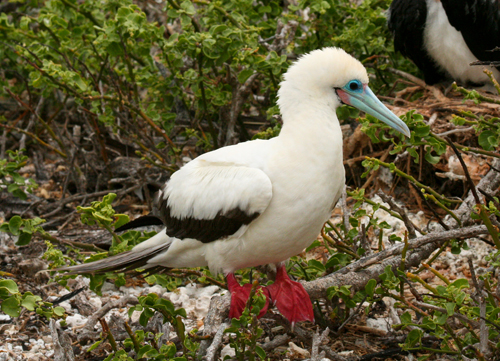
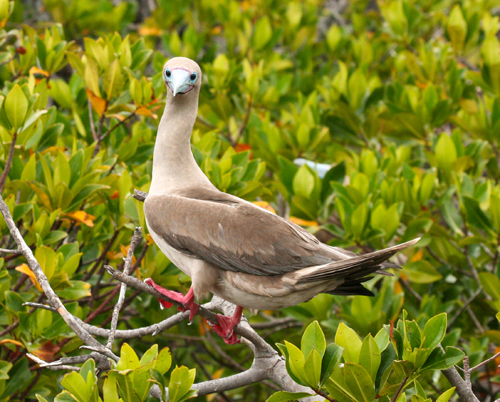
Fork-tailed Gulls,
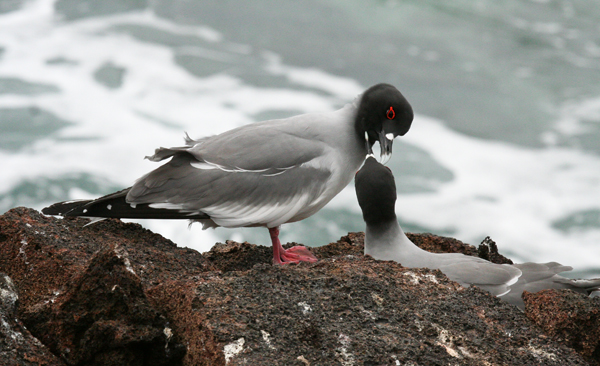
Lava Gulls,
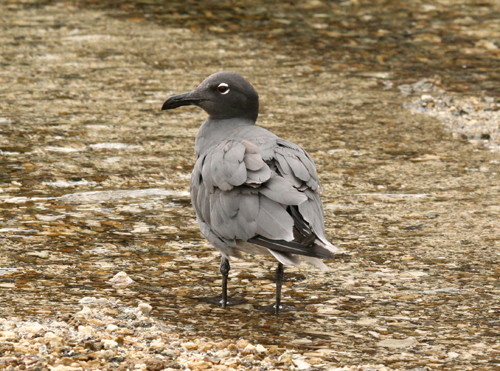
Red-billed Tropicbirds,
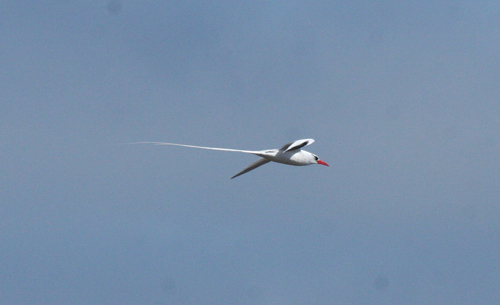
Yellow-crowned Night Herons, Ruddy Turnstones, Willets, Whimbrels, Wandering Tattlers, Short-eared Owls, Galapagos Doves, Galapagos Mockingbirds,
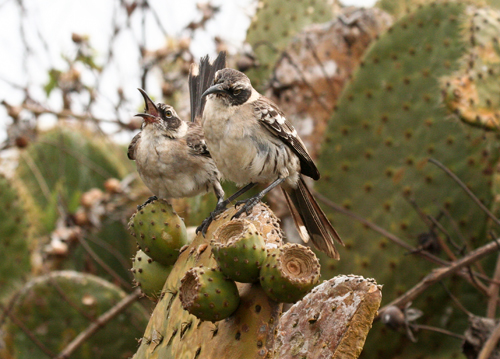
Sharp-beaked Ground Finches, and Warbler Finches, and Large Ground Finches.
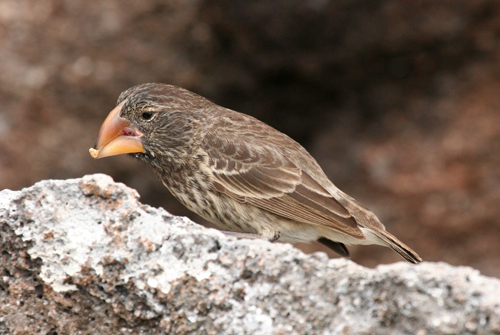
We started the long (14 hour) cruise from Genovesa to Fernandina before supper. Fernandina is the youngest of the volacanically formed Galapagos Islands. Barbara’s “Patch” failed her so she spent a difficult night.
